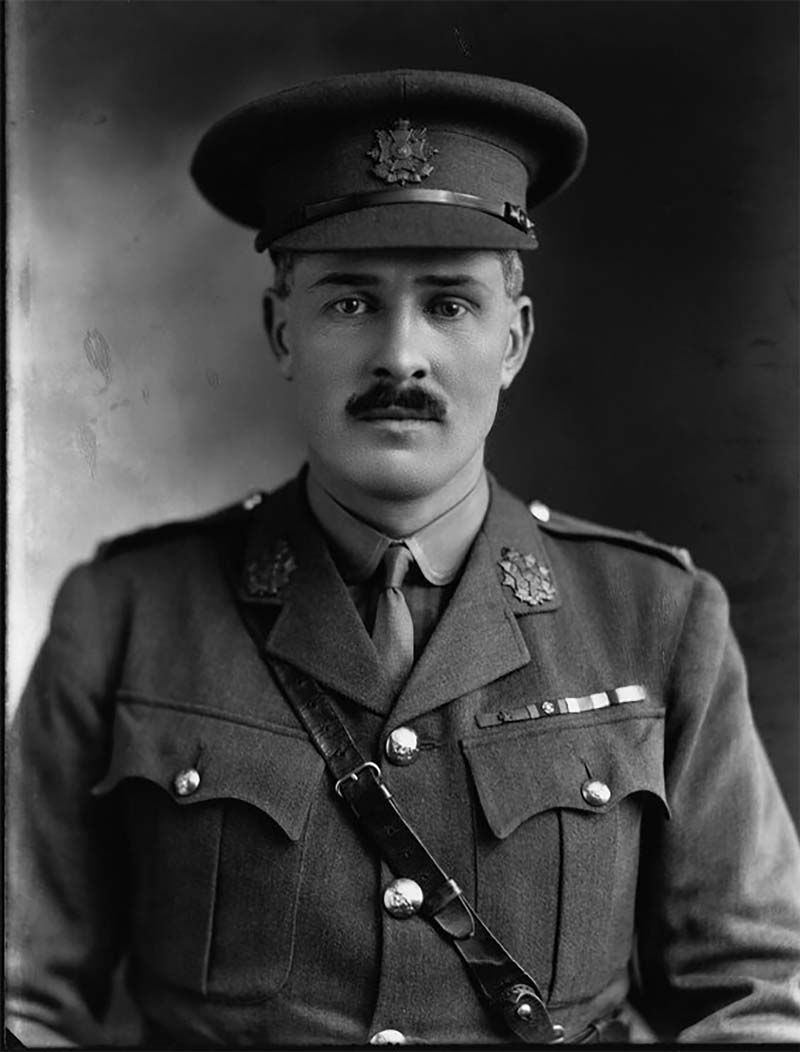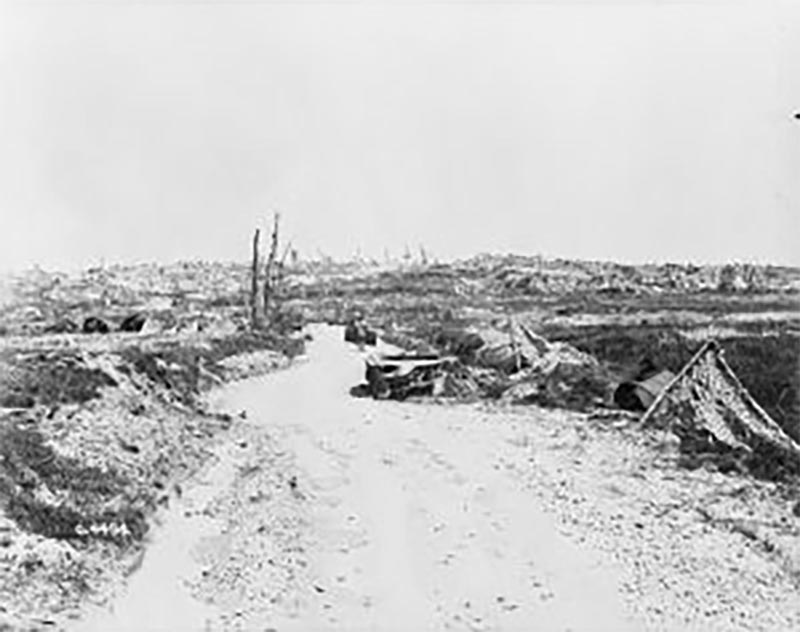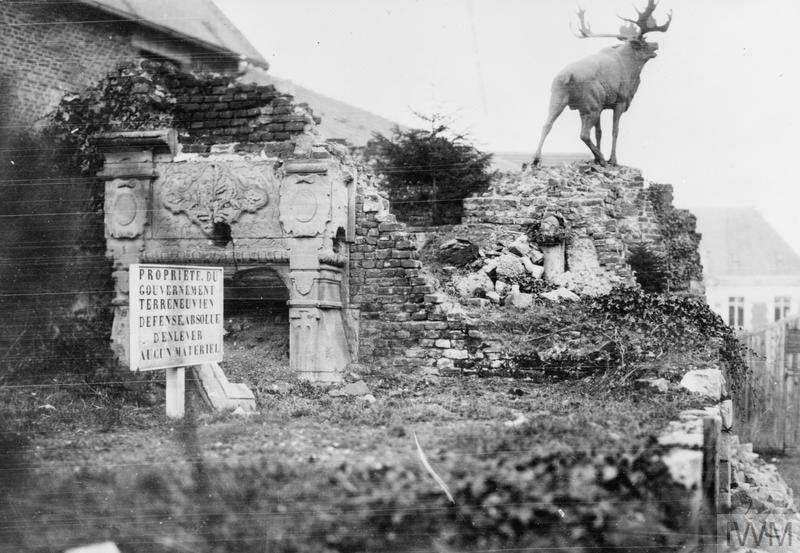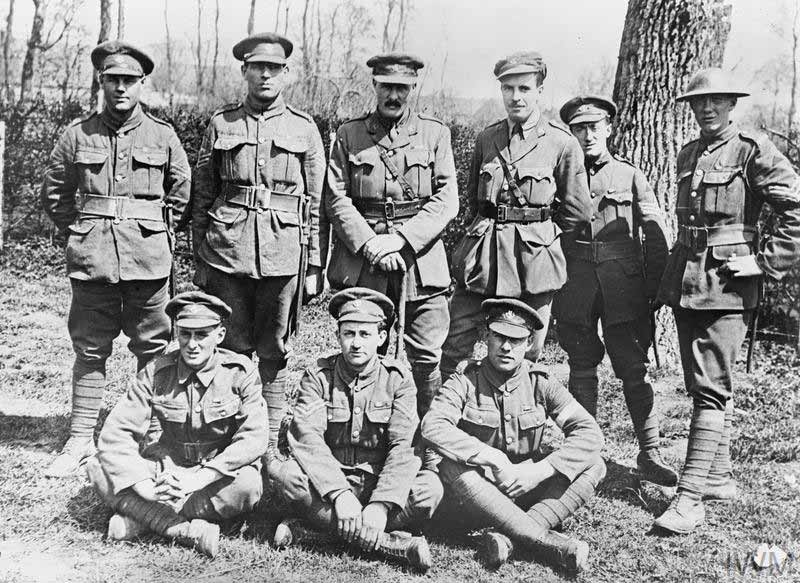“Forbes said, ‘Stand to,’” wrote Sergeant Anthony James Stacey in his diary. “The rest followed him.”
In his entries, Stacey reflected on not only on his time with the Newfoundland Regiment, but also serving under the renowned Lieutenant-Colonel James Forbes-Robertson, who was one of nine other men who stood guard of the French village of Monchy-Le-Peux in April 1917. They would later be known as the Monchy Ten, with Forbes-Robertson commanding the victory during the larger Battle of Arras and earning the Distinguished Service Order for his actions at the village. He had previously received the Military Cross and would later receive the Victoria Cross while serving with the Border Regiment.

These points included a German trench east of Monchy-le-Preux, a shallow forest known as “Machine Gun Woods,” Bois du Vert, and most importantly, Infantry Hill. Located about 900 metres outside of the village, the hill was strategically key due to its expansive vantage of France’s northern region.
Acting on orders from the 88th Brigade, the Newfoundland Regiment, alongside the 1st Essex Regiment, began its work on April 14, 1917, at 5:30 a.m.—and with such promise too.

“[Our headquarters’] windows soon became blocked with falling brick caused by German shells,” Stacey described.
By 9 a.m., the German counterattack had grown too fierce, and the regiments were pinched by the Germans from all three sides, while casualties mounted.
“I went out on the main road and saw an Essex sergeant passing,” wrote Stacey. “He was wounded in the leg and on his way back…he said that the two regiments, Newfoundland and Essex, were surrounded.”
With battalion headquarters left wondering about the state of these regiments, Forbes-Robertson ordered Captain Kevin J. Keegan to scout the situation. Soon, Keegan returned with news worse than they could’ve imagined: there was not one of the Newfoundland Regiment left unwounded east of Monchy-le-Preux to defend against the 200-300 German troops heading toward the village.

“Up the stairs [Forbes-Robertson] went, grabbing a rifle and bandolier from a dead man,” Stacey wrote.
With a tiny force now in tow, Forbes-Robertson set his eyes on a trench at the village’s edge, believing it to be the most advantageous position for fending off the advancing Germans. But in order to get there, his men would have to traverse 100 metres of open ground.
Fearless against enemy fire, the men made their dash. Only nine made it unscathed. To make for an even 10, one soldier who had been wounded by an overhead shell, joined the unwounded.
Armed with rifles, the men operated with far more gusto than their meagre numbers would’ve supposed. Under Forbes-Roberton’s leadership, they held off the German advance for 11 hours. And because of the men’s use of snipers and rapid fire from different embankment points, the Germans were unable to determine the group’s size.
One of the defenders, Private Fred Curran, told The Veteran: “…we successfully created the delusion that we were a large invincible army.”
“On no man’s land were machine gun carriers lying among the dead men and debris, and we got enough ammunition to keep up a continuous firing for over an hour.”

Had it not been for the Monchy Ten saving Monchy-le-Preux from German capture, it would have taken 40,000 troops to reclaim the village.
Relaying a message of the Monchy-le-Preux situation to brigade headquarters, Private Albert Rose, against Forbes-Robertson’s orders, returned to the Newfoundland Regiment and brought back a first batch of reinforcements.
By 8 p.m., Forbes-Robertson’s little band of soldiers had successfully defended the village.
According to Allied commanders, had it not been for the Monchy Ten saving Monchy-le-Preux from German capture, it would have taken 40,000 troops to reclaim the village.
Forbes-Robertson’s Distinguished Service Order citation read: “For conspicuous gallantry and devotion to duty when in command of his battalion during an enemy attack.
“He undoubtedly saved a very critical situation by his promptness, bravery and example.”
Advertisement












